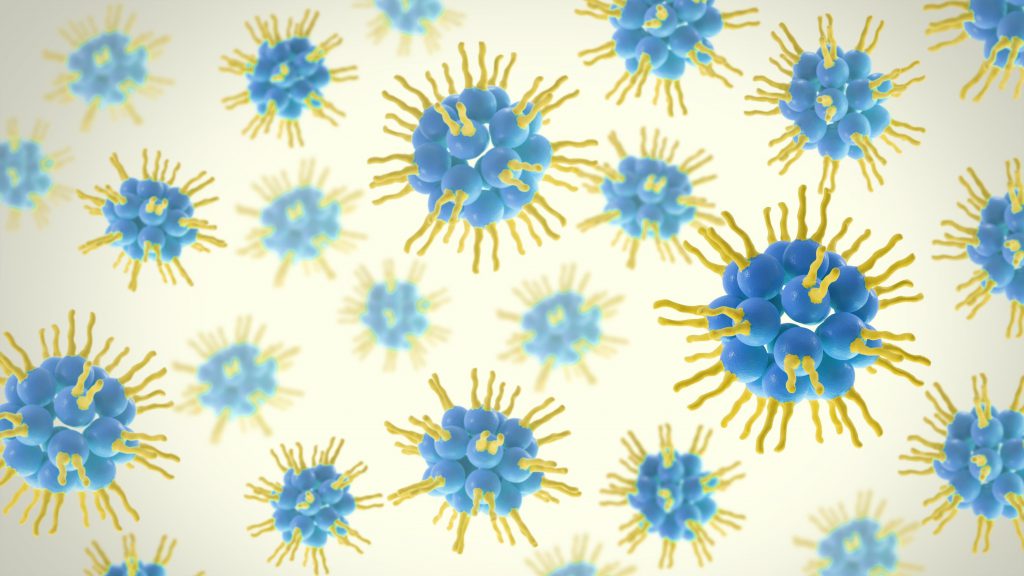
Currently there is no vaccine or specific drug against COVID-19, the disease caused by the severe acute respiratory syndrome, SARS-CoV-2. Since the outbreak of COVID-19 in late 2019, researchers have been racing to learn more about SARS-CoV-2.
Thomas Webster, Art Zafiropoulo Chair of chemical engineering at Northeastern, who specializes in the development of nanoscale medicine and technology for the treatment of diseases, is part of a team of scientists contributing ideas and technologies to the Centers for Disease Control and Prevention to fight the COVID-19. Webster’s idea of using nanoparticles is that the virus behind COVID-19 consists of structures of similar size to its nanoparticles. At that scale, the material is very small, 10,000 times smaller than the width of a single hair.
Webster proposed that particles of similar sizes can attach to the SARS-CoV-2 virus and destroy its structure by combining infrared light treatment. This structural change will stop the virus’s ability to survive and reproduce in the body. Webster explains that we have to consider the size in this range, as in the nanometer range, if we want to detect the virus, we have to inactivate it.
The core of what Webster and other researchers call theranostics is the discovery and neutralization of viruses with nanomedicine, which focuses on combining treatment and diagnosis. Using this method, his laboratory has specialized in nanoparticles to fight the microbes that cause influenza and tuberculosis. He believes that it’s not just using one way to detect whether people are infected with the virus, and another way to use it as a treatment method, but for both detection and treatment, we have to use the same particles and the same method.
SARS-CoV-2 is mainly transmitted through tiny virus particle droplets such as breathing, talking, sneezing, and coughing. These droplets enter the body through the eyes, mouth or nose. Preliminary research has also shown that when these bacteria attach to countertops, armrests, and other hard surfaces, they can survive for several days.
Webster thinks that’s one of the reasons why theranostics with nanoparticles has been the focus of the COVID-19 outbreak. Nanoparticles can even inactivate pathogens before they enter the body, as they attach to different objects and surfaces. His laboratory has developed materials that can be sprayed on objects to form nanoparticles and attack viruses. “Even if it was on a surface, on someone’s countertop, or an iPhone,” he says. “It doesn’t mean anything because it’s not the active form of that virus.”
The same technology can be fine-tuned and adjusted to target various viruses, bacteria, and other pathogens. Unlike other new drugs with large molecular structures, nanoparticles are so small that they can move through our bodies without disrupting other functions, such as the function of the immune system. Webster explains that’s like surveyors, they can bypass the blood, and they can check the body more easily, and take longer time to try to detect the virus. To do all this work, the CDC needs to know the specifics about what kind of structure is needed to neutralize SARS-CoV-2, Webster says. The information has not been made public.
An alternative to nanomedicine is the production of synthetic molecules. But Webster says that this tactic presents some challenges. In the case of chemotherapy used to treat cancer cells, such synthetic drugs can cause serious side effects, killing cancer cells and other cells in the body. Webster still acknowledges that not many researchers are working on nanoparticles to kill the virus. Due to the size of the nanoparticles, they are ubiquitous (maybe too common) to penetrate other parts of the human body. To reduce this risk, Webster’s laboratory has focused on using iron oxide. Particles of that make up entail chemistry that is already natural to our bodies and diets.
